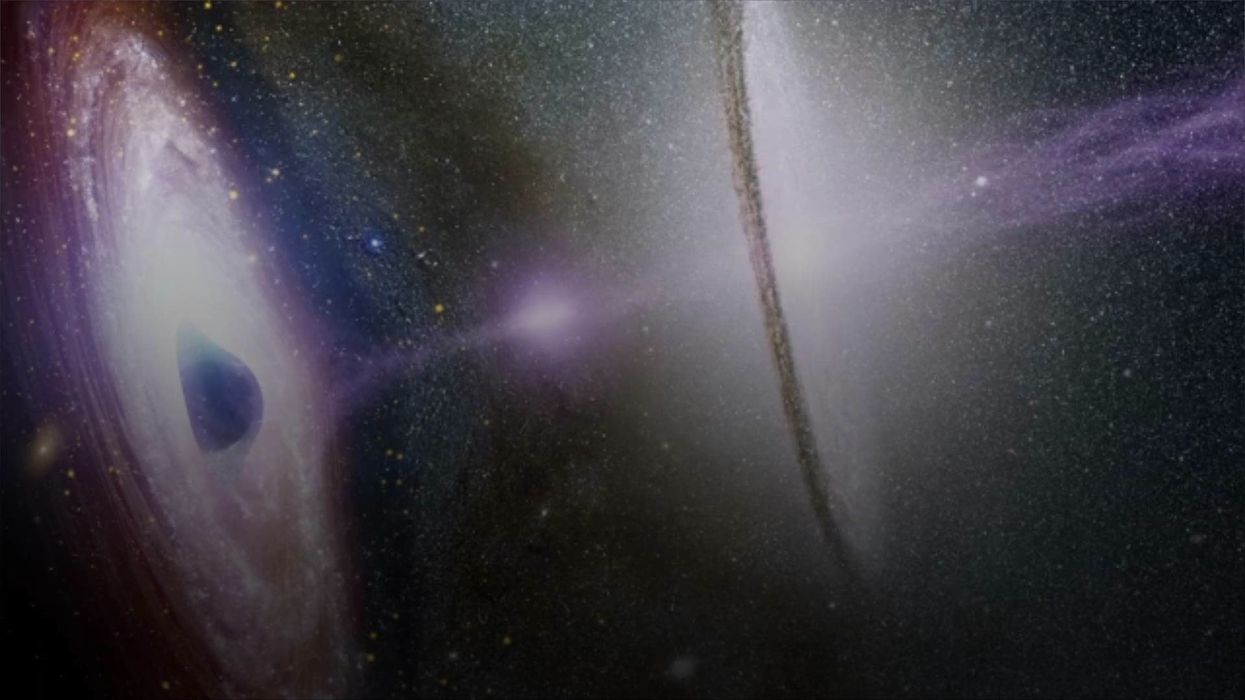Science & Tech
Harriet Brewis
Apr 05, 2023
Astronomers Detect Mysterious Star That Defies Black Hole Theory
content.jwplatform.com
The two closest black holes to Earth have just been discovered – and they’re in a class of their own, according to experts.
The celestial bodies were captured by the European Space Agency’s (ESA) Gaia satellite which is currently creating a detailed map of all the stars in the Milky Way.
They are located 1,560 light-years and 3,800 light-years away which, given that our galaxy measures 105,000 light-years side to side, means they’re positively on our doorstep.
However, it’s not just their (relative) proximity that makes the pair, named respectively Gaia BH1 and Gaia BH2, so special. They are unlike any other black hole we have encountered so far.
Sign up for our free Indy100 weekly newsletter
“Until recently, all the black holes astronomers knew of were discovered by emission of light – usually at X-ray and radio wavelengths – produced by material falling in,” the ESA announced in a statement. “The new black holes are truly black and can only be detected by their gravitational effects.”
“What sets this new group of black holes apart from the ones we already knew about is their wide separation from their companion stars,” said astrophysicist Kareem El-Badry, who made the groundbreaking discovery.
He explained that the new black holes are much further from their orbiting stars than the black holes with which we’re more familiar.
These better-known pairs are known as X-ray binaries and are made up of a black hole and a companion star which orbit close to one another, meaning material falls from the star into the black hole, causing it to emit radio and X-rays.
Since the two new black holes couldn’t be discovered via radio light emission, it was only after studying the movement of their companion stars that they were uncovered.

“A strange ‘wobble’ in the movement of the stars [in] the sky indicated that they are orbiting a very massive object,” the ESA explained. “In both cases, the objects (the new black holes) are approximately ten times more massive than our Sun.”
The fact that Gaia BH1 and Gaia BH2 have the most widely separated orbits of all known black and are also the closest to Earth (that we know of) suggests that many more similar black holes in wide binaries are still waiting to be discovered.
“This is very exciting because it now implies that these black holes in wide orbits are actually common in space – more common than binaries where the black hole and star are closer,” said Yvette Cendes, of the Harvard Smithsonian Center for Astrophysics, who helped discover the second black hole.
However, she continued: “The trouble is detecting them.”
After all, this new type of black hole doesn’t emit any light, making it practically invisible.
Sill, Cendes went on: “The good news is that Gaia is still taking data, and its next data release (in 2025) will contain many more of these stars with mystery black hole companions in it.
In the meantime, astronomers will be busy trying to work out where these wide-orbit black holes come from.
Have your say in our news democracy. Click the upvote icon at the top of the page to help raise this article through the indy100 rankings.
Top 100
The Conversation (0)














